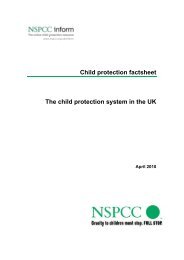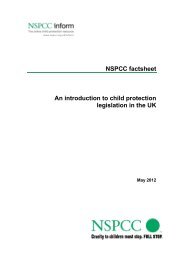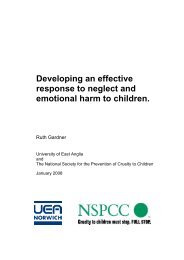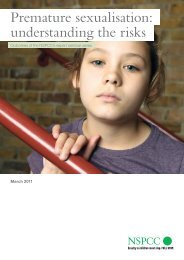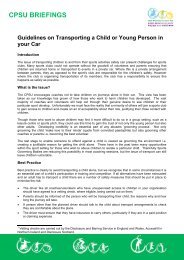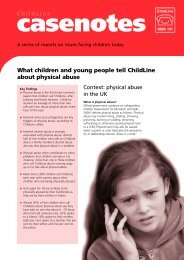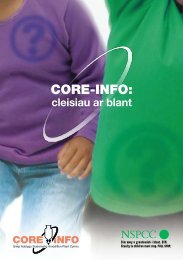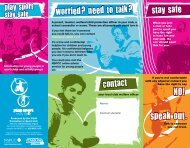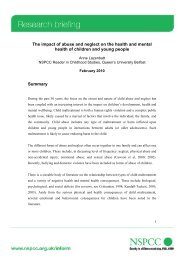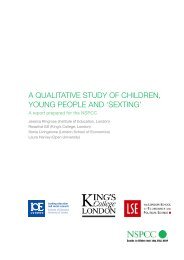Neglect and serious case reviews (PDF, 735KB) - nspcc
Neglect and serious case reviews (PDF, 735KB) - nspcc
Neglect and serious case reviews (PDF, 735KB) - nspcc
Create successful ePaper yourself
Turn your PDF publications into a flip-book with our unique Google optimized e-Paper software.
situation or dangers posed by, for example dangerous links to local gangs. There is little<br />
support for neglected young people in the transition to adulthood.<br />
Suicide <strong>and</strong> young people with unrecognized needs<br />
Summary<br />
malnutrition<br />
While most of these young people who took their own lives had been well known<br />
to agencies over a number of years, there were others who killed themselves whose<br />
problems were largely missed by agencies <strong>and</strong> whose needs went largely unrecognized<br />
by professionals, ‘… even the schools did not get to know her well enough to identify<br />
other problems (other than non school attendance)’.<br />
Young people’s experience of neglect was less likely to be known by professionals when<br />
they were isolated <strong>and</strong> effectively ab<strong>and</strong>oned. Multiple family moves could mean the<br />
young person was rarely in school or always the newcomer with few opportunities to<br />
socialize or make friends. Being constantly on the move could also mean that access to<br />
medical <strong>and</strong> mental health support was restricted or appointments missed. In some <strong>case</strong>s<br />
where young people were particularly isolated, parents restricted any access to support<br />
services so that young people had no one to confide in. School is often the only potential<br />
source of support which can be accessed without parental knowledge <strong>and</strong> the only way<br />
a young person can find someone outside of the family to confide in. In situations where<br />
the neglect is combined with control <strong>and</strong> psychological maltreatment, parental hostility<br />
can mean adolescents are completely off the professional radar.<br />
Anonymised <strong>case</strong> summaries from 46 SCRs from 2003–2011 where <strong>serious</strong> neglect was<br />
known to be a prominent feature, were analysed within a six-fold typology of neglect<br />
related circumstances which had a catastrophic impact on the child (<strong>and</strong> family). A<br />
vignette made up of a number of <strong>case</strong>s was used to illustrate themes for each typology.<br />
There are learning points in relation to each of the six ‘routes’ to a catastrophic outcome<br />
involving neglect <strong>and</strong> some overriding, general point applicable to most.<br />
For this research malnutrition is defined as ‘life-threatening loss of weight or failure to<br />
gain weight or <strong>serious</strong> conse quences of neglecting to nourish the child’.<br />
Learning points:<br />
3. A thematic analysis of neglect<br />
• None of the children who died or nearly died from malnutrition were in the child<br />
protection system. Their links with any agency were almost non-existent by the time<br />
of their death or <strong>serious</strong> harm.<br />
• Increased isolation of a family adds to the invisibility of the child or children within<br />
that family so malnutrition is not spotted (eg when children cease to attend<br />
75




